This wonderful Cornish workshop and museum is dedicated to the legacy of studio pottery trailblazer Bernard Leach
Five artworks to fall in love to
Five artworks to fall in love to
13 Feb 2023
Oh, Valentine’s Day. A schmooze-fest of cupids, big red hearts, outlandish romantic gestures and many a bouquet of flowers. Like many Western holidays, its roots can be found in Christian celebrations, but 14 February has been associated with romance since at least 1382, when it was referenced in Chaucer’s Parliament of Fowls. No wonder, then, that artists have long looked to love to spur artworks to warm the most hardened of hearts…
Passion and fire
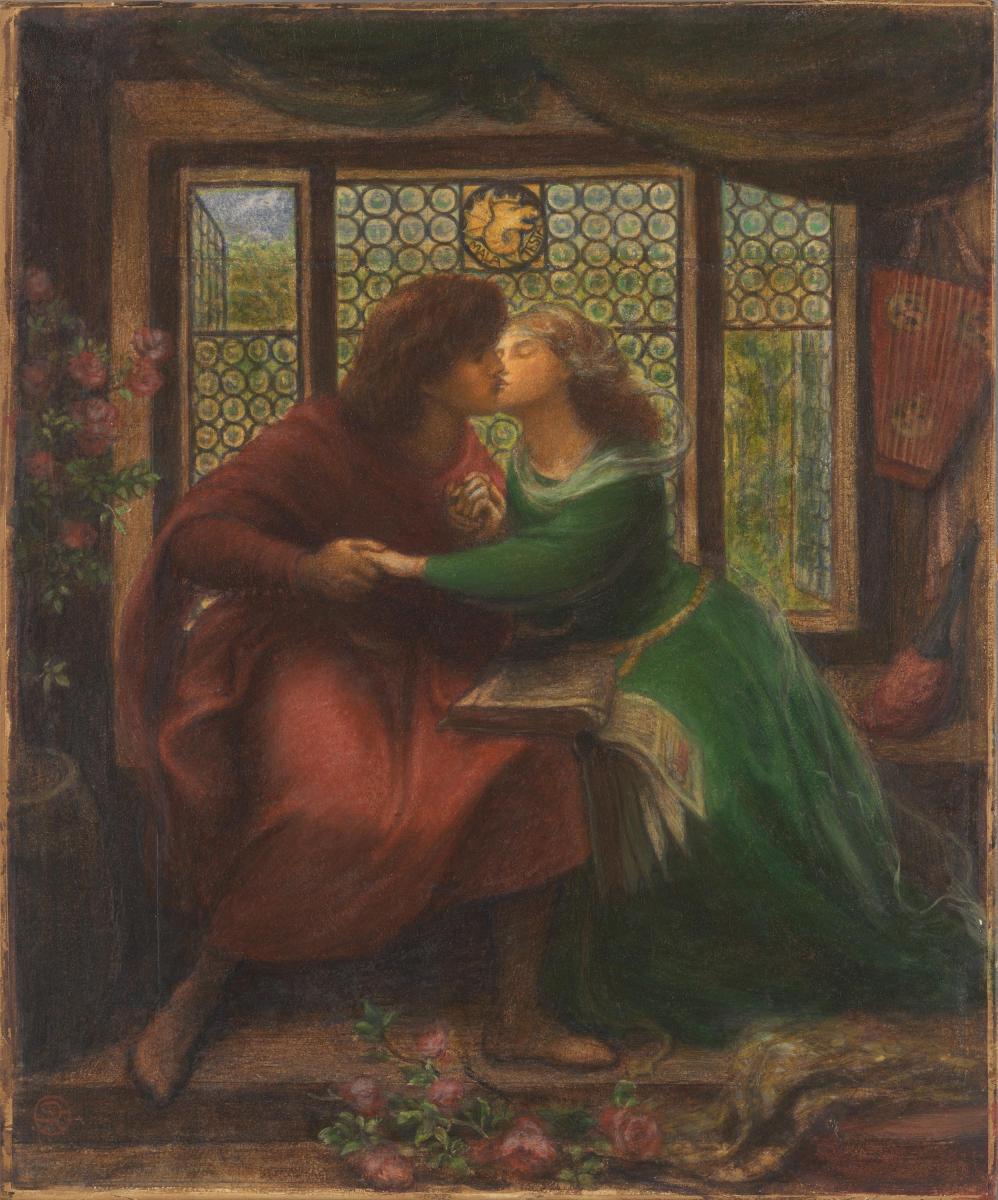 Paolo and Francesca da Rimini by Dante Gabriel Rossetti (1828–82), 1867. Image: National Gallery of Victoria, Melbourne, Felton Bequest, 1956
Paolo and Francesca da Rimini by Dante Gabriel Rossetti (1828–82), 1867. Image: National Gallery of Victoria, Melbourne, Felton Bequest, 1956
This piece is a tale of two Dantes. The first, Dante Alighieri, inspired the second, Dante Gabriel Rossetti, with his poem Inferno. In that famous saga, the first Dante describes a journey through Hell. Among the tormented souls he met along the way were Francesca and her brother-in-law Paolo. Both married to others but in love with one another.
Their forbidden love damned them to the inferno, but it also earned them a wave of support and interest from artists, writers and members of the Victorian public. After all, what could be more romantic than a love story that ends in Hell? Rossetti, who changed his name in honour of his hero, Alighieri, also drew on the story of Lancelot and Guinevere when creating this piece.
Boxed beauty
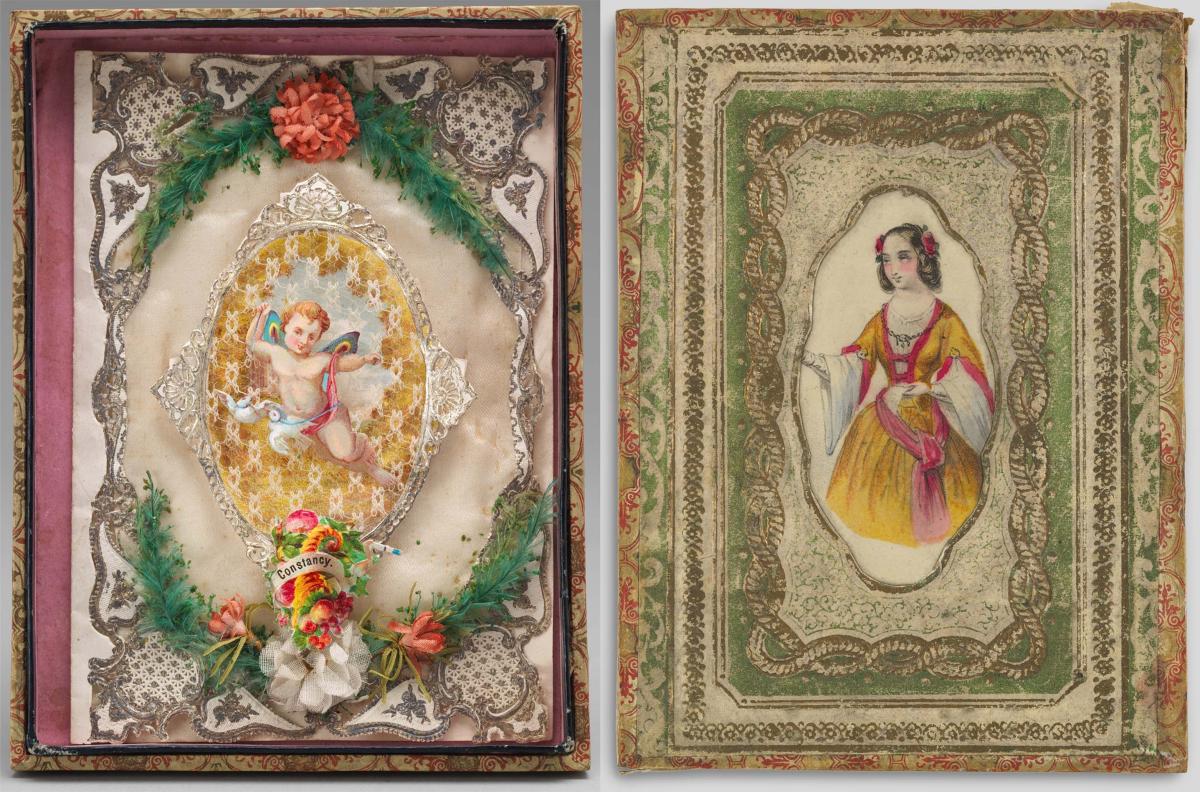 Boxed Valentine’s Day Card by an unknown British artist, c.1840–99. Image: The Metropolitan Museum of Art, gift of Mrs Richard Riddell, 1981
Boxed Valentine’s Day Card by an unknown British artist, c.1840–99. Image: The Metropolitan Museum of Art, gift of Mrs Richard Riddell, 1981
The history of the greeting card is rich and varied, with the 19th century arguably being one of the best eras for exquisite cards. This particular example, housed at the Metropolitan Museum of Art, is perhaps ever-so-slightly overshadowed by its protective box (right), which shows the sort of woman who would likely be the beneficiary of the card giving.
Inside, a cupid is waiting to be found. Beneath the angelic form is the word ‘constancy’ – whether this is a promise or an expectation, it’s impossible to say. Regardless, the intricate flower and lace details are a marvel unlikely to be replicated by the typical supermarket greeting card that gets exchanged this year.
Love notes
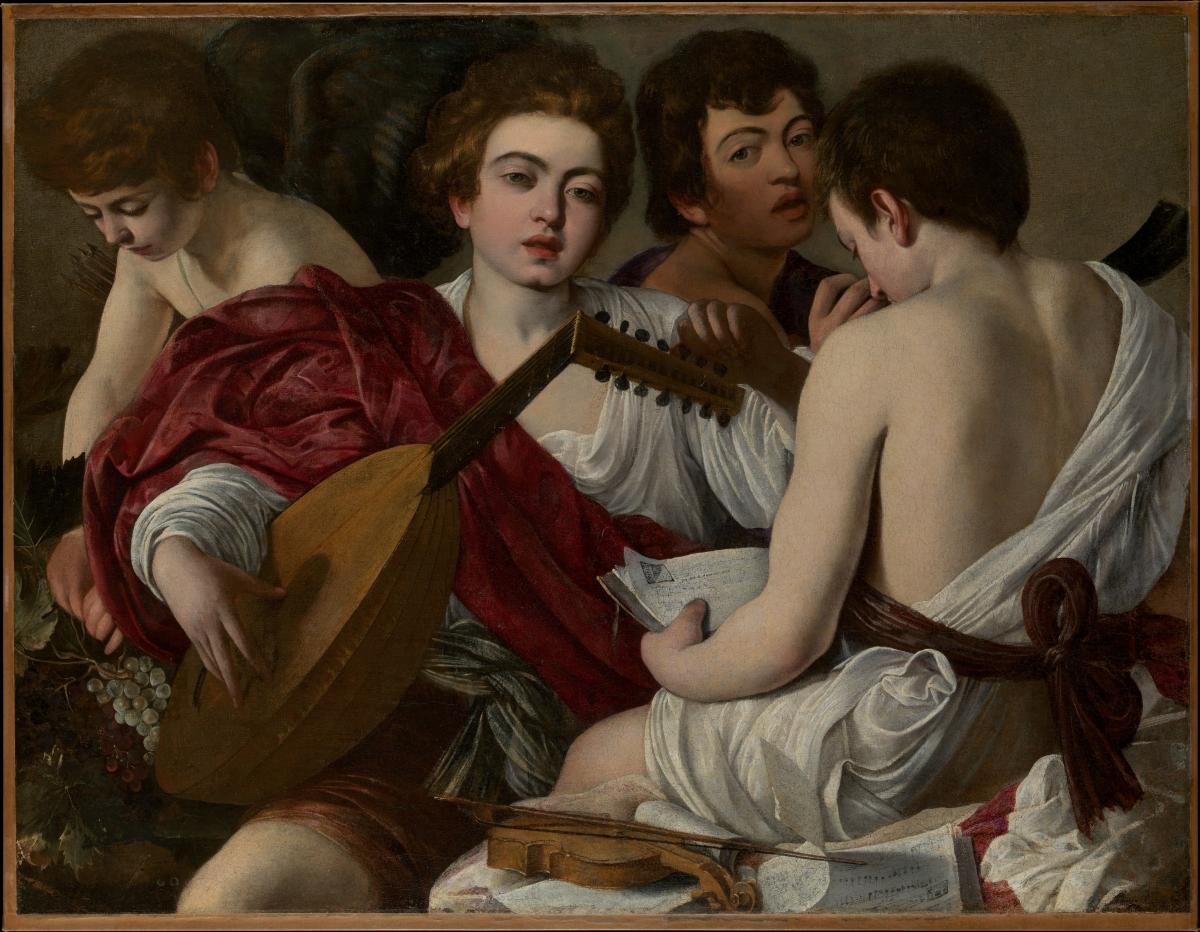 The Musicians by Michelangelo Merisi da Caravaggio (1571–1610), c.1595. Image: The Metropolitan Museum of Art, Rogers Fund, 1952
The Musicians by Michelangelo Merisi da Caravaggio (1571–1610), c.1595. Image: The Metropolitan Museum of Art, Rogers Fund, 1952
If music be the food of love, play on. An idea most famously expressed by Shakespeare but explored in equal depth here. Heralded as an example of historical art that hides an undercurrent of queerness, The Musicians shows a group of young players gathered together in preparation for a performance. Cupid, seen on the left, reaches for grapes: the fruit are as much a sustenance to life as music is to love.
Caravaggio is no stranger to homoeroticism, and while labels can rarely be accurately applied in retrospect, it is thought that he may have had an interest in the male form. This is exemplified by the lack of female nudes in his work and the abundance of male ones, as well as historical accounts of the artist’s living arrangements.
Regardless, given the relative rarity of classical art loudly showcasing non-heterosexual romance, there is a joy to be found in pieces like this.
A duo’s bond
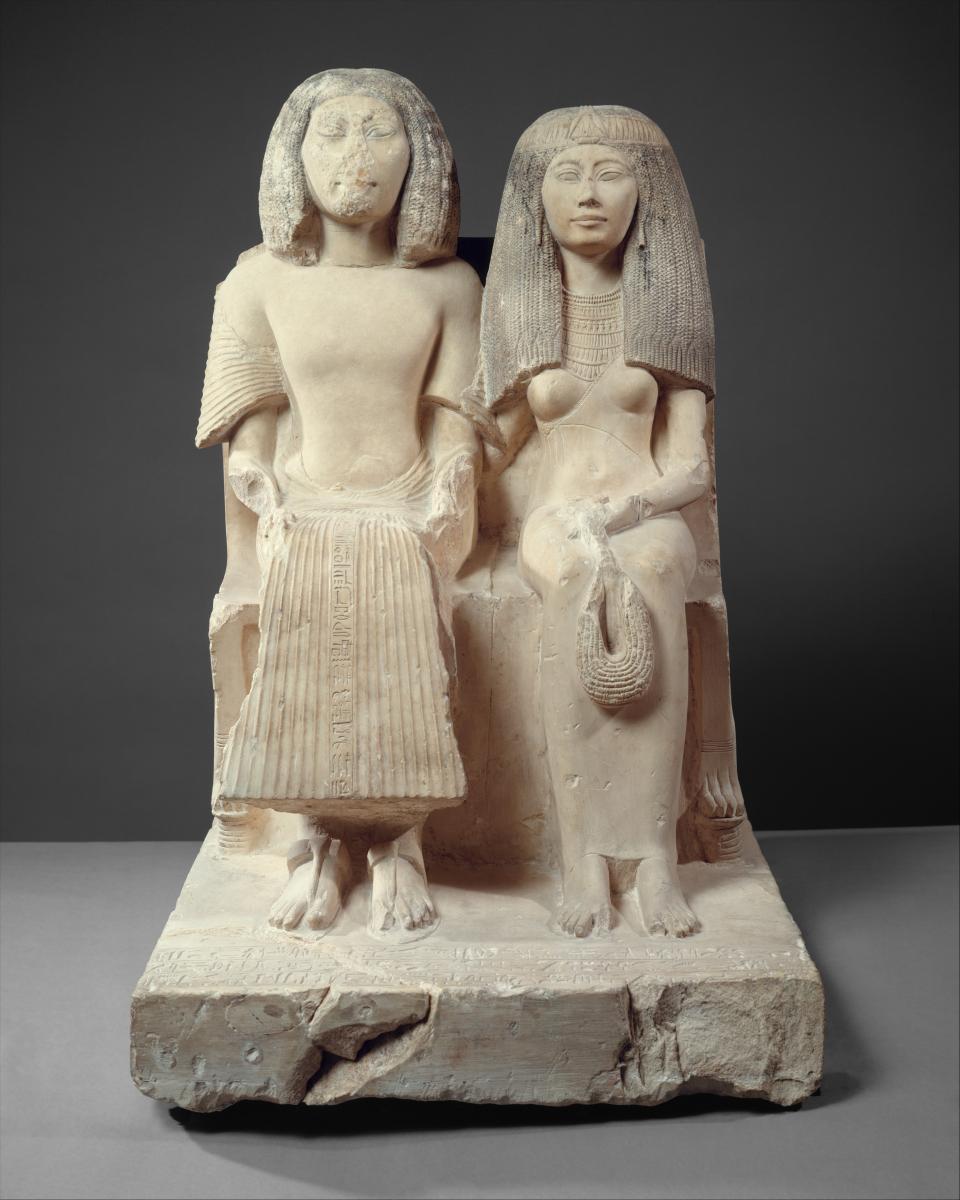 Yuny and His Wife Renenutet, by an unknown artist, c.1294–79 BC. Image: The Metropolitan Museum of Art, Rogers Fund, 1915
Yuny and His Wife Renenutet, by an unknown artist, c.1294–79 BC. Image: The Metropolitan Museum of Art, Rogers Fund, 1915
It’s true that this piece can’t compare to the audacious emotion of later artworks, but in its own way, a 3,000-plus-year-old sculpture of a loving couple is about a good reminder as any of the enduring strength of romance.
Depicted here are Yuny, a royal scribe in Egypt, and Renenutet, a singer of Amun-Re – a deity fused of two gods, including Ra, the sun god.
Beneath the necessary formalities of their roles and backgrounds – their wigs and clothing reveal they were important figures, both in terms of society and religion – there are simple gestures of their love. Renenutet’s arm is draped across Yuny’s shoulder, and their chair is decorated on the back with touching scenes of romantic affection.
Baubles and riches
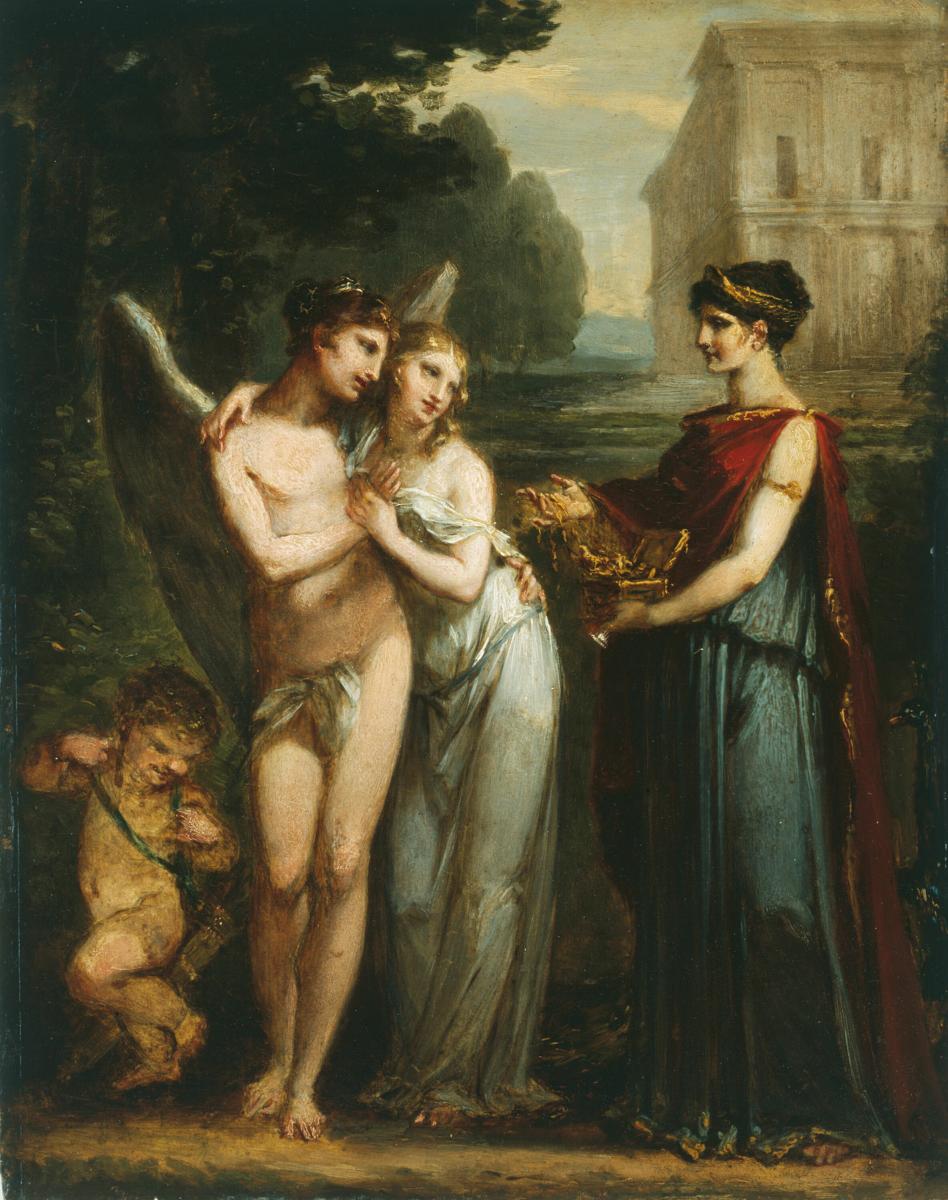
Innocence Prefers Love to Riches, by Pierre Paul Prud’hon 1758–1823, c.1804. Image: Art Institute Chicago, Mr and Mrs Martin A Ryerson Collection
The allegory of this early-19th-century piece is so obvious it threatens to slap you around the face: the personification of innocence (centre) has chosen a figure representing love over a figure representing riches, thus proving that love will always win.
Or will it?
There is doubt to be found in our friend Innocence, who is casting a somewhat enamoured glance in the direction of the Grecian Riches. Love, of course, is oblivious to this hesitancy: it is embracing the central figure of Innocence and holding it close.
Prud’hon, known for playing with allegory, created this piece as a starting point for a larger painting by his collaborator, Constance Mayer.
About the Author
Ciaran Sneddon
Writes for The Arts Society
JOIN OUR MAILING LIST
Become an instant expert!
Find out more about the arts by becoming a Supporter of The Arts Society.
For just £20 a year you will receive invitations to exclusive member events and courses, special offers and concessions, our regular newsletter and our beautiful arts magazine, full of news, views, events and artist profiles.
FIND YOUR NEAREST SOCIETY
MORE FEATURES
Ever wanted to write a crime novel? As Britain’s annual crime writing festival opens, we uncover some top leads
It’s just 10 days until the Summer Olympic Games open in Paris. To mark the moment, Simon Inglis reveals how art and design play a key part in this, the world’s most spectacular multi-sport competition



